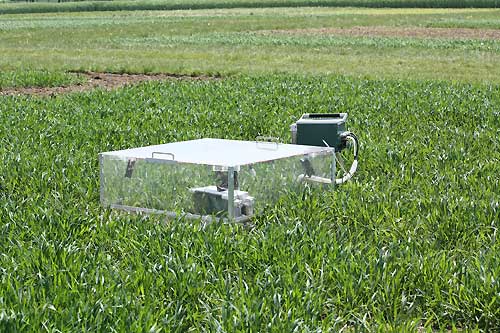Modelling the spatio-temporal variability of crop and cropping system processes under heterogeneous field conditions




Research Area:
Crop ecology, environmental physics, quantitative modeling, scaling

Agricultural fields are characterized by varying degrees of soil heterogeneity which generate unique patterns of water transport regimes within landscapes. How these patterns influence crop growth and resulting latent heat fluxes has not been sufficiently analyzed so far. How can the governing processes be quantified in mathematical models? What model complexity is needed? How can the models be scaled from the point to the patch, field, and regional levels? What importance do processes have at different scales? Which is the best combination between model complexity and scaling approach? These are the central questions which are currently investigated by our group in close collaboration with partners from the TR32 collaborative research center.
We follow a research approach that is characterized by an appropriate balance between experimentation and modeling. To produce high quality data for model development and testing we validated and improved the chamber technique for measuring gas exchange in plant canopies and the heat-balance method for measuring sap-flow in wheat. Both techniques are used to assess the daily and seasonal dynamics of CO2 and H2O flux dynamics in wheat, barley, and sugar-beet at different field locations. Together with information from standard growth analyses, this data is used to describe, model, and scale the effect of soil heterogeneity on crop growth and resulting latent-heat flux.
The ultimate goal of this project is to contribute to the improvement of the vegetation parameterization in the COSMO-CLM-PARFLOW model framework. Ongoing work focuses on the effect of advanced functional type characterization on simulation accuracy.
Cooperation partner:
Wageningen University, The Netherlands